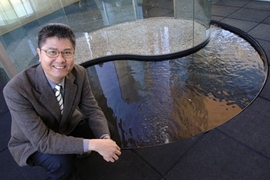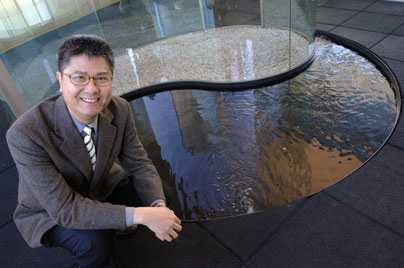Two pacemakers in the brain work together in harmony to ensure that breathing occurs in a regular rhythm, according to new research from MIT scientists.
That cooperation provides critical backup during respiratory stress, from the early trauma of birth to intense exercise and oxygen shortages, said Chi-Sang Poon, principal research scientist at the Harvard-MIT Division of Health Sciences and Technology (HST).
"The two-pacemaker system provides robustness and redundancy that protects us against a number of challenges from childhood to adulthood," said Poon, senior author of a paper on the work appearing in the online edition of the Proceedings of the National Academy of Sciences the week of Nov. 3.
Abnormities of the two pacemakers may be related to some cases of "crib death" in babies and some forms of central sleep apnea, which can affect premature infants and the elderly, Poon said.
Scientists have known that two areas of the brain, the pre-Botzinger complex (preBotC) and the parafacial respiratory group (pFRG), control breathing. However, researchers have hotly debated how these two regions work together, and which one plays a greater role in setting the pace.
The new MIT model, which Poon has dubbed the "handshake model," reconciles several different views.
In Poon's model, developed with graduate student Steffen Wittmeier, lead author of the paper, both brain regions work together to regulate respiration during infancy, but the preBotC takes control during adulthood.
Early in life, both pacemakers are needed. After birth, and throughout infancy, the pFRG triggers preBotC, resulting in strong, rhythmic breaths. Without pFRG, breathing can be weak and erratic, Poon said.
However, after childhood, the preBotC region takes over as the dominant pacemaker. Only under respiratory stress, such as during shortage of oxygen, does pFRG kick in and help regulate breathing rhythm.
The new model is called the "handshake model" because the two pacemakers send signals back and forth to trigger each other. "It's not just a one-way street," Poon said.
The fail-safe network provides critical backup and appears to be evolutionarily conserved, as it is also found in reptiles, birds and amphibians.
During infancy, when both pacemakers are regulating breathing, the pFRG takes the lead role, exciting the preBotC to initiate inhalation. During inhalation, the preBotC inhibits pFRG but the pFRG rebounds at the end of inhalation. The process starts over when pFRG excites preBotC again at the end of exhalation.
Later on, in adulthood, pFRG becomes less important and preBotC becomes more independent. The exception is during respiratory stress, such as a shortage of oxygen. In those situations, the system becomes a "reverse handshake," with both pacemakers functioning and preBotC taking the lead.
"This is a beautiful example of a yin-yang relationship," said Poon, with pacemakers exciting and inhibiting one another. "You want to be stable so you can have harmony."
Other authors of the paper are Gang Song, research scientist in HST, and James Duffin of the University of Toronto.
The research was funded by the National Institutes of Health.
A version of this article appeared in MIT Tech Talk on November 5, 2008 (download PDF).







